In healthcare, providing an excellent patient experience is of utmost importance. Every single interaction a patient has with a medical facility shapes their perception of the quality of care they receive.
This is where ultrasound professionals come in.
As medical professionals, we have a critical role to play in ensuring diagnostic accuracy and providing a positive and comforting experience to our patients.
One effective tool that has proven to be invaluable in achieving this goal is AIDET.
AIDET stands for Acknowledge, Introduce, Duration, Explanation, and Thank You. By implementing the AIDET framework, we can establish a connection with our patients, set clear expectations, and ensure that they feel informed and empowered throughout the ultrasound process. Overall, AIDET is an excellent approach that helps us provide high-quality care and improve the overall patient experience.
In this article, I’ve got:
- A true story about managing patient expectations
- What is AIDET
- Tips and verbiage for each step
Would AIDET have helped?
Let me share a story with you where AIDET would have really changed a patient’s perception.
A patient called to complain that an ultrasound tech didn’t do a very good job on their thyroid exam. When asked for more details, the patient said I’ve had my thyroid looked at before.
The first time, the tech was really thorough, and the exam was at least 25 minutes. This time, my exam only lasted for 10 minutes at most! How could they have seen everything?
They clearly rushed through it.
The manager fielding the call asked for some time to take a look into it and said they would be in contact.
Their research showed that the patient had received high-quality care and very similar imaging for both exams, but the biggest difference:
A new sonographer did the first exam.
The second was by a sonographer with over 20 years of experience.
Would the patient have felt different if the sonographers had used AIDET? What if, during their introduction, they told the patient that they were “a new sonographer” or “have been scanning for many years?” How about if they had shared how long they thought (knowing their own skillset) the exam would take?

What is AIDET?
AIDET is a communication framework that is used in healthcare settings to enhance the quality of care and improve patient satisfaction. It is an acronym that stands for five important elements of effective communication between healthcare providers and patients.
A = Acknowledge
I = Introduce
D = Duration
E = Explanation
T = Thank You
Overall, AIDET is a powerful tool that helps healthcare providers build trust, reduce anxiety, and improve patient outcomes.
Let’s take a closer look at these steps and some examples of what you can say

“Good morning/afternoon! Welcome to our ultrasound department. How are you feeling today?”
Acknowledge:
In the process of AIDET, the first step is to acknowledge the patient. This step is crucial as it sets the tone for the entire interaction.
Tips for making the most of Acknowledge:
- Make eye contact
- Offer a warm greeting
- Show genuine interest in the patient’s concerns or questions
Sonographers who do this establish a bond of trust and understanding with the patient from the very beginning of their ultrasound experience. By actively listening and empathizing with the patient, we can create a safe and comfortable environment for them, which is essential for a positive healthcare experience.

“Hello, I’m [Your Name], and I’m relatively new here. I recently completed my training and am excited to be part of the ultrasound team. I’ll be performing your ultrasound today, and I want to assure you that I’ve been thoroughly trained to provide you with the best care possible.”
Introduce:
Next, it’s important to introduce ourselves and explain our role in the ultrasound procedure.
Tips for tackling Introduce:
- Provide your name and credentials
- Introduce other members of the health care team that might be in the procedure
- Share the names and experiences of the team during a hand-off
- Manage up
Providing our name and credentials helps to establish credibility and instill confidence in the patient. Additionally, we should introduce any other members of the healthcare team who will be involved in the ultrasound process, ensuring transparency and collaboration throughout the patient’s journey.
Managing up yourself can sometimes be difficult, but it will really help the patient have more confidence in your skills. Tell the patient how long you’ve been scanning for, refer to yourself as a registered sonographer, and talk highly of your peers.

“Just to give you an idea of the timeline for today’s ultrasound, it typically takes around 30 to 60 minutes from start to finish. I’ll work diligently to complete the procedure as efficiently as possible without compromising on the quality of the images. If you have any time constraints or specific concerns, please let me know.”
Duration:
It is important to ensure that the patient undergoing an ultrasound procedure is comfortable and at ease.
Tips for addressing duration:
- Tell the patient how long the test will take
- Update the patient on the progress of the exam
- Tell the patient how long the results will take
- Keep the patient updated on wait times if you’re running behind
One way to achieve this is by informing the patient about the expected duration of the procedure. This helps manage their expectations and reduces anxiety. It is also beneficial to provide regular updates on the progress of the procedure to further reassure the patient and enhance their overall experience. This approach can help the patient feel more in control and promote a sense of trust between the patient and the healthcare team. By taking these steps, we can ensure that the patient feels supported and cared for throughout the ultrasound procedure.

“Let me explain a bit more about the procedure itself. During the exam, I’ll apply a warm gel to your skin in the area we’ll be scanning. This gel helps the ultrasound probe make better contact with your skin and allows us to obtain clearer images. I’ll then gently move the probe over the area of interest to capture the necessary images. Throughout the process, I’ll communicate with you and guide you through any positional changes that may be needed. If you have any discomfort or questions at any point, please don’t hesitate to let me know.”
Explanation:
Among the five key elements, providing a clear and concise explanation of the ultrasound procedure is perhaps the most critical step in the process.
Tips on covering explanation:
- Describe what the goal of the exam is
- Share what the patient can expect during the exam
- Remind them how this is part of their overall care plan
- Use straightforward, non-medical, language
To ensure that the patient understands and feels comfortable with the ultrasound examination, the healthcare provider should describe what the patient can expect during the exam, including the duration of the procedure, any preparatory steps they may need to take, and the purpose of the ultrasound in their overall care plan. In addition, using simple and straightforward language instead of medical jargon can help the patient grasp the information and feel empowered to ask questions.
By taking the time to explain the ultrasound procedure thoroughly, healthcare providers can help alleviate any anxieties or concerns the patient may have and ultimately improve their overall experience.

“Thank you for choosing our facility for your ultrasound today, Mrs. Johnson. It’s been a pleasure assisting you, and I appreciate your cooperation throughout the procedure. If you have any further questions or concerns, please don’t hesitate to reach out. Take care, and I hope you have a wonderful rest of your day.”
Thank You:
It is important for us to acknowledge the patience and trust that a patient shows by choosing our facility for their ultrasound procedure.
Tips for covering thank you:
- Express gratitude for them selecting us
- Simple and heartfelt
- Give them another chance to ask any questions
- Repeat this step after the exam as well
We should make it a point to express our gratitude to them for selecting us as their healthcare provider. A simple yet heartfelt thank you can go a long way in making the patient feel valued and appreciated.
In addition to expressing our gratitude, we should also assure the patient that we are available to address any questions or concerns they may have. It is crucial to make the patient feel comfortable and confident in the care they will receive before, during, and after the ultrasound procedure. Hence, we should encourage patients to voice any queries or doubts, and we will do our best to address them efficiently.
Overall, expressing gratitude and offering reassurance are simple but effective ways to make the patient feel at ease and valued. It is essential to maintain a patient-centric approach and ensure that we provide them with the highest quality of care and service.


